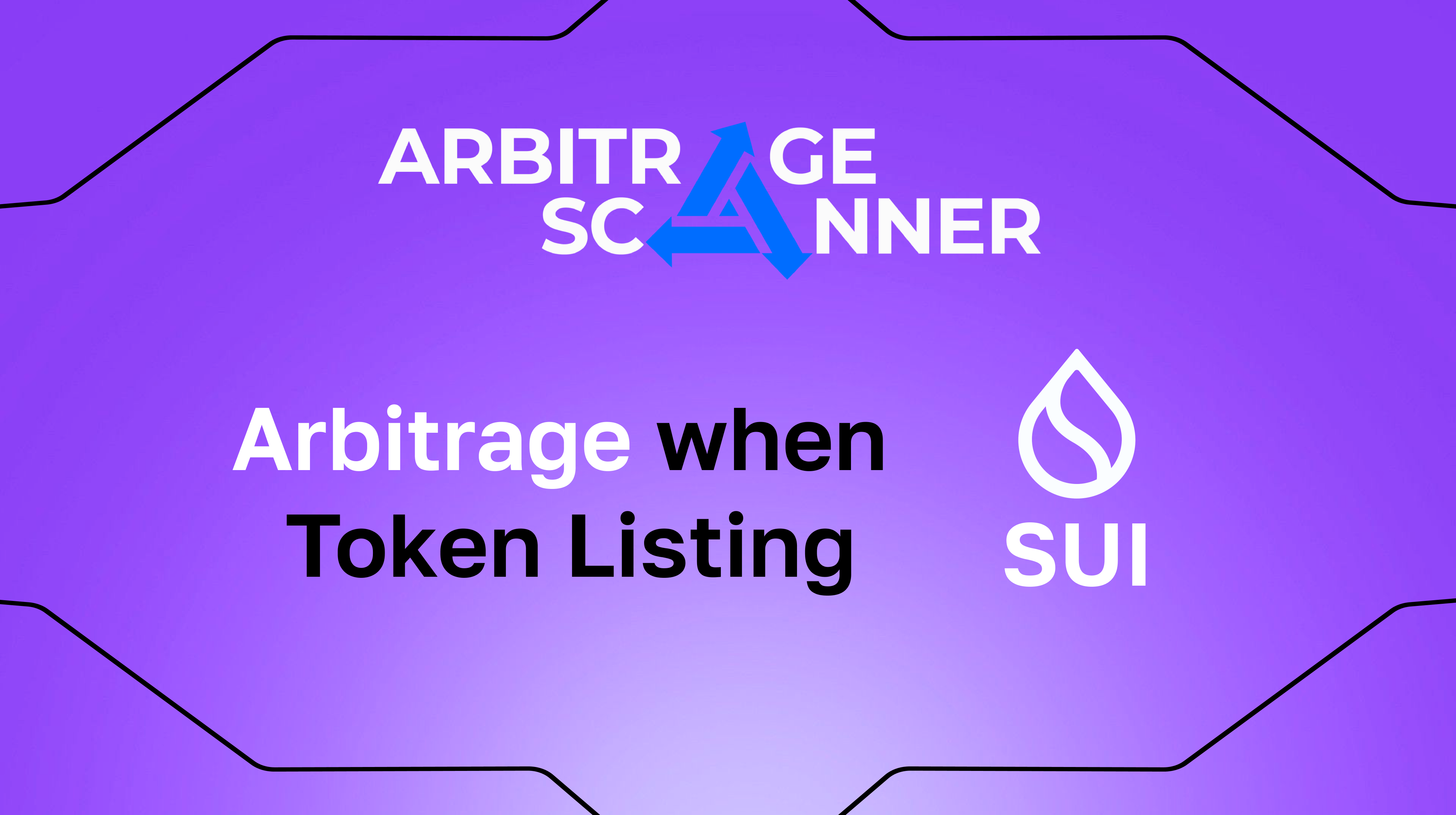Cryptocurrency Arbitrage Strategy | Token listing

Cryptocurrency arbitrage example
The user of our service received 1500 SUI tokens before listing.
He received a telegram notification from the scanner that there is a spread between Binance and other exchanges. Client checked prices on exchanges and saw that the price on Binance was higher than on Bybit.
The client sold tokens on Binance for a total of $2,467 and bought the same amount on Bybit, but at a price of $1.1.
It turns out that he was left with the same number of tokens, but at the same time managed to earn:
1.1 x 1450.8 = 1595,88$ (purchase costs)
$2467 (sale amount) - $1595.88 (purchase costs) = 871,12$
Cryptocurrency arbitrage with coin holding
This type of arbitrage is called arbitrage with hold.
How it works: You hold a token like a long investment, receive a notification from a scanner that there is arbitrage with some exchange, sell on your exchange, and buy a little cheaper on another.
Inter-exchange arbitrage (buying on one exchange, selling on another) would not have worked here, since the withdrawal of the SUI token from the exchanges was closed.
Bots for cryptocurrency arbitrage
For arbitrage with coin holding, it is better to use a scanner.
With its help, you receive a notification about a spread on any of the tokens in the portfolio.
And for inter-exchange arbitrage with coin deposit/withdrawal, it is better to use a screener, since it shows all arbitrage situations at the current time. By filtering out tokens that are not suitable for arbitrage for some reason. You will receive a huge list of coins with which you can conduct arbitrage transactions.
Want to learn more about crypto arbitrage?
Get a subscription and access the best tool on the market for arbitrage on Spot, Futures, CEX, and DEX exchanges.





